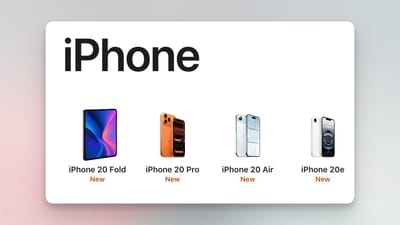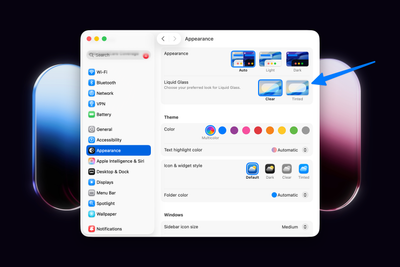iPhone Air review
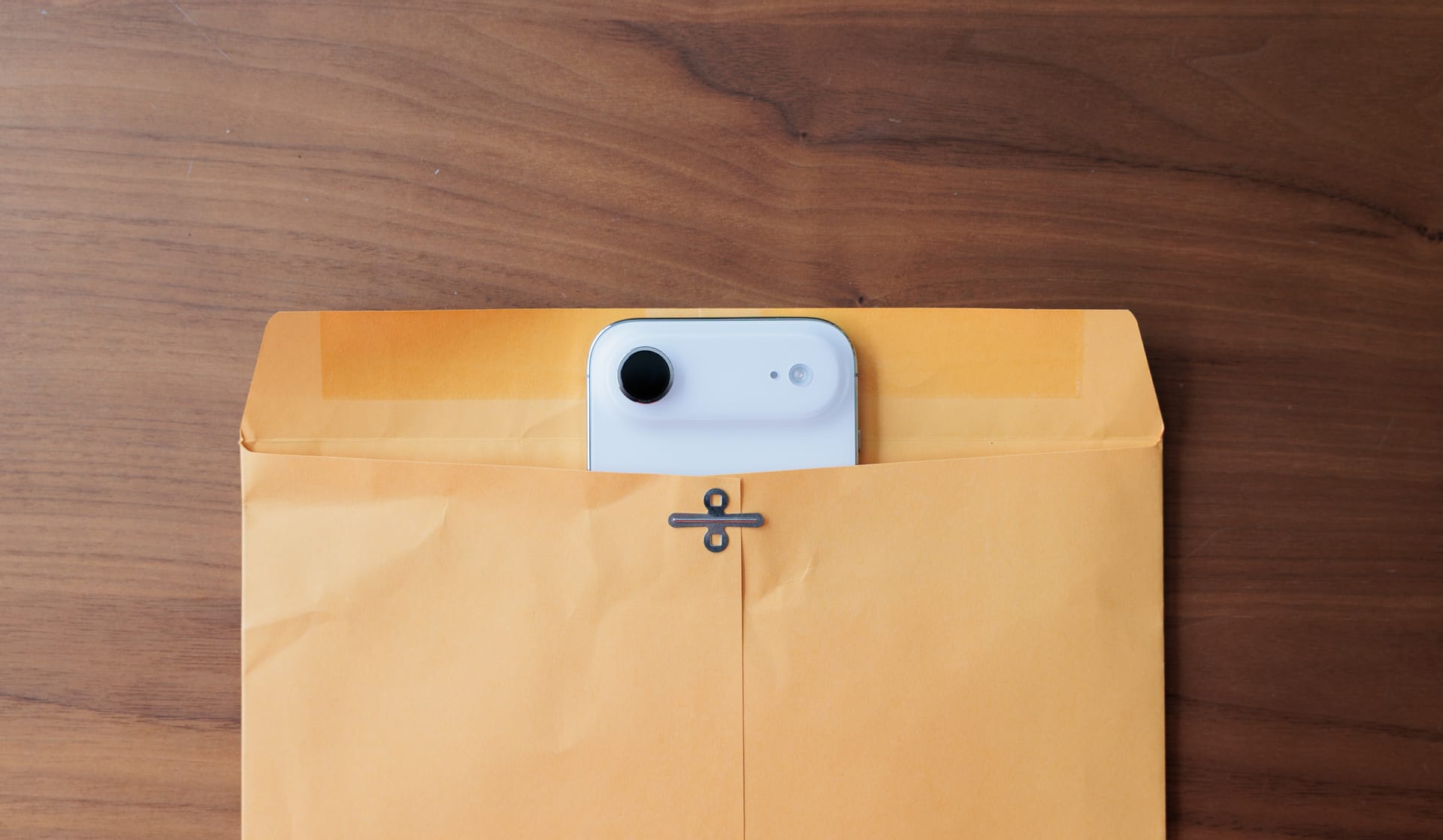
The iPhone Air has been a bit of a ride for me. I was quite impressed when I briefly held it in hand in an Apple Store when I was picking up my iPhone 17 Pro. It does feel remarkably thin in a way that an iPhone simply never has before. The closest comparison I can think of is when I initially held an iPhone 5, which was so much lighter than the 4s that it replaced that it felt almost like a dummy unit. If the iPhone 5 felt like a dummy unit, the iPhone Air feels like a product that can't exist, at least not with today's tech.
Then I got to handle one for a few weeks after doing some battery tests with it. While it was definitely cool, some of the luster was lost on me as I moved past the initial shock of how thin it felt. It was certainly thinner than my iPhone 17 Pro, but it didn't make me immediately feel like the traditional iPhones were out of date. To me, the situation felt similar to how the MacBook Air and MacBook Pro exist at the same time, and both of them feel like totally usable products for different people. My wife has a MacBook Air, and I can recognize that it's a thinner computer that is lighter and a little bit more comfortable to use, but the value I get from the added features you can fit in the MacBook Pro make the thicker Pro the better product for me.
So if I'd written this review a week ago, I actually might have been a little negative on the iPhone Air. Yes, the novelty was cool, and yes this is clearly where iPhones will all be eventually, but beyond that, I didn't find a ton to like about this phone. However, spending a little more time with this device has made me appreciate it more. Let's talk about it.
Design
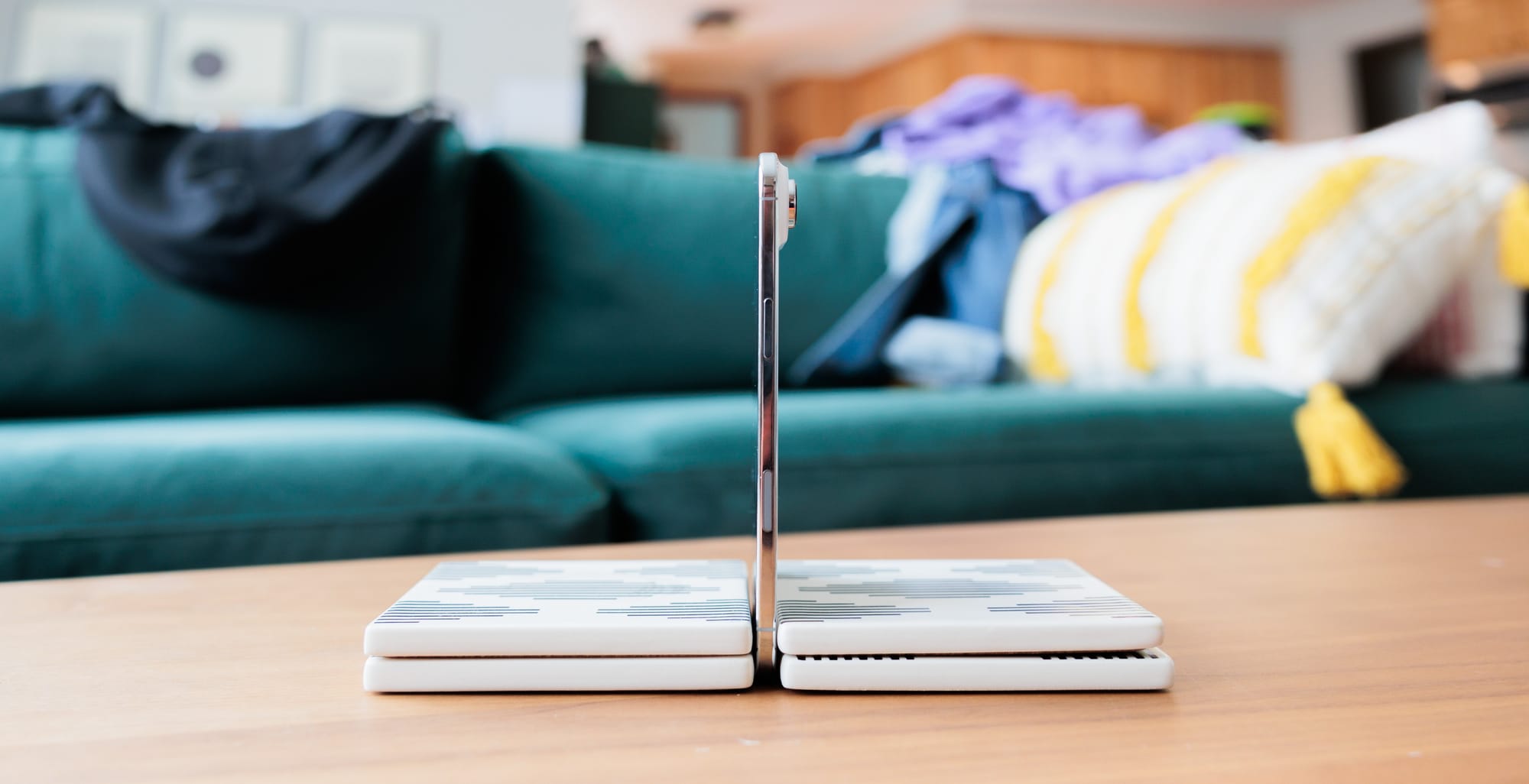
The entire point of this phone existing is its design, so let's start there.
There's no way to properly describe the thinness of this phone beyond what I said in the intro, so I won't even try. I'll just say that this phone is indeed very thin and very light compared to the Pro phones that I'm used to, specifically the iPhone 17 Pro. Yes, this is a notably different design to the 17 Pro lineup, but it's very similar to the iPhone 16 Pro design language from just last year.
I must say, it feels very solid in the hand. I haven't done any full force bend tests myself, but I have exerted some pressure on the device at different angles trying to bend and twist it, and it really doesn't give at all. The strength of this device is a notable uptick from the infamous iPhone 6, which was another very thin phone that bent with even moderate pressure applied. This phone does not feel delicate at all, it feels remarkably sturdy.
Visually, I think the phone is quite good, too. The camera bar across the top on the back is nice and has a really satisfying slope from the main back, and I like the frosted appearance of the back glass. We'll talk more about the display in the next section, but let's just say it delivers everything I would want from this sort of phone. The phone just looks premium and elegant. I personally have the white model, which might be a little bit boring, but I think it looks very classy in person with its silver rails and frosted back glass.
The weight and size are also very impressive and are actually the things I'm most excited about here. The depth doesn't impact me much moment to moment, but I definitely notice the weight when switching between the iPhone Air and the iPhone 17 Pro. I definitely appreciate the reduced weight on the Air.
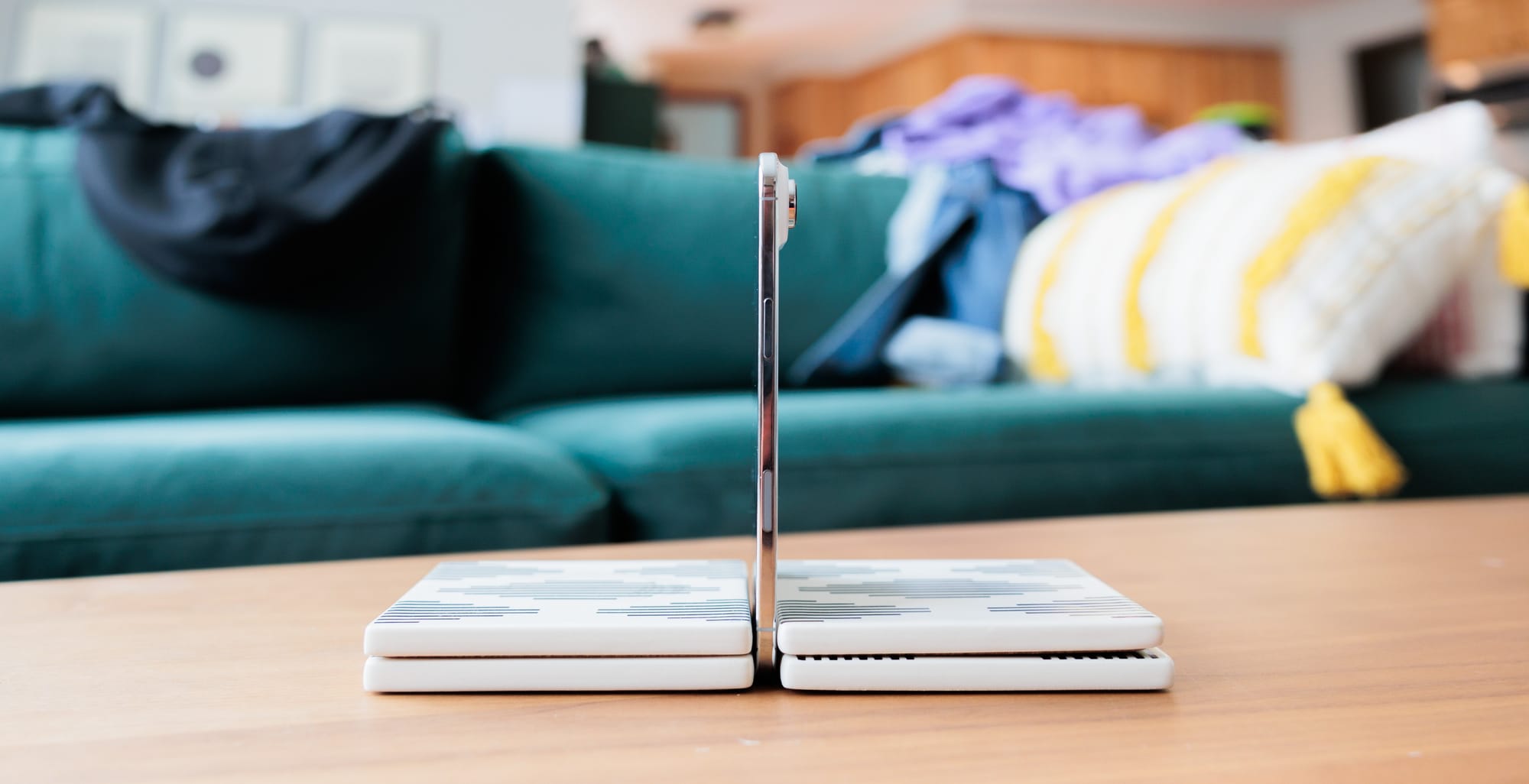
Additionally, as someone who's never felt perfectly served by either the iPhone Pro or iPhone Pro Max display sizes, I actually find the 6.5-inch display on the iPhone Air to be in that Goldilocks zone for someone like me. I would say it's closer to the Max experience in terms of many actions requiring two hands to perform, but it's straddling that line in a way that really works well for what I'm personally looking for in a smartphone display. It‘s large enough to feel impressive and display UI and content at a good size, but it's not so enormous in a way that I feel the iPhone Max line has been for several years, where it's just a little bit too big for my preferences. It’s not a deal breaker, but it should be noted that the aspect ratio of the Air’s display is different from the other iPhones, and is fatter than the others.
All in all, I went on a journey with this design. It shocked me at first, didn't do much for me after the shock wore off, and eventually won me over as I bounced between it and my 17 Pro. I love my 17 Pro, but I have to admit that using it side-by-side with the Air for a few weeks has made me think, "damn, it is a bit chunky, isn't it?" As will become clear later on, the Pro is still the phone for me, but I wish I could make the Air my full-time device.
Oh, and as a combo breaker from most of the rest of the tech press, I think using a case with this phone is very reasonable. It will still feel massively thin compared to what you're used to if you used a case on your phone before (and most everyone does). Protect it. Stylize it. It'll still feel very cool, I promise.
Display
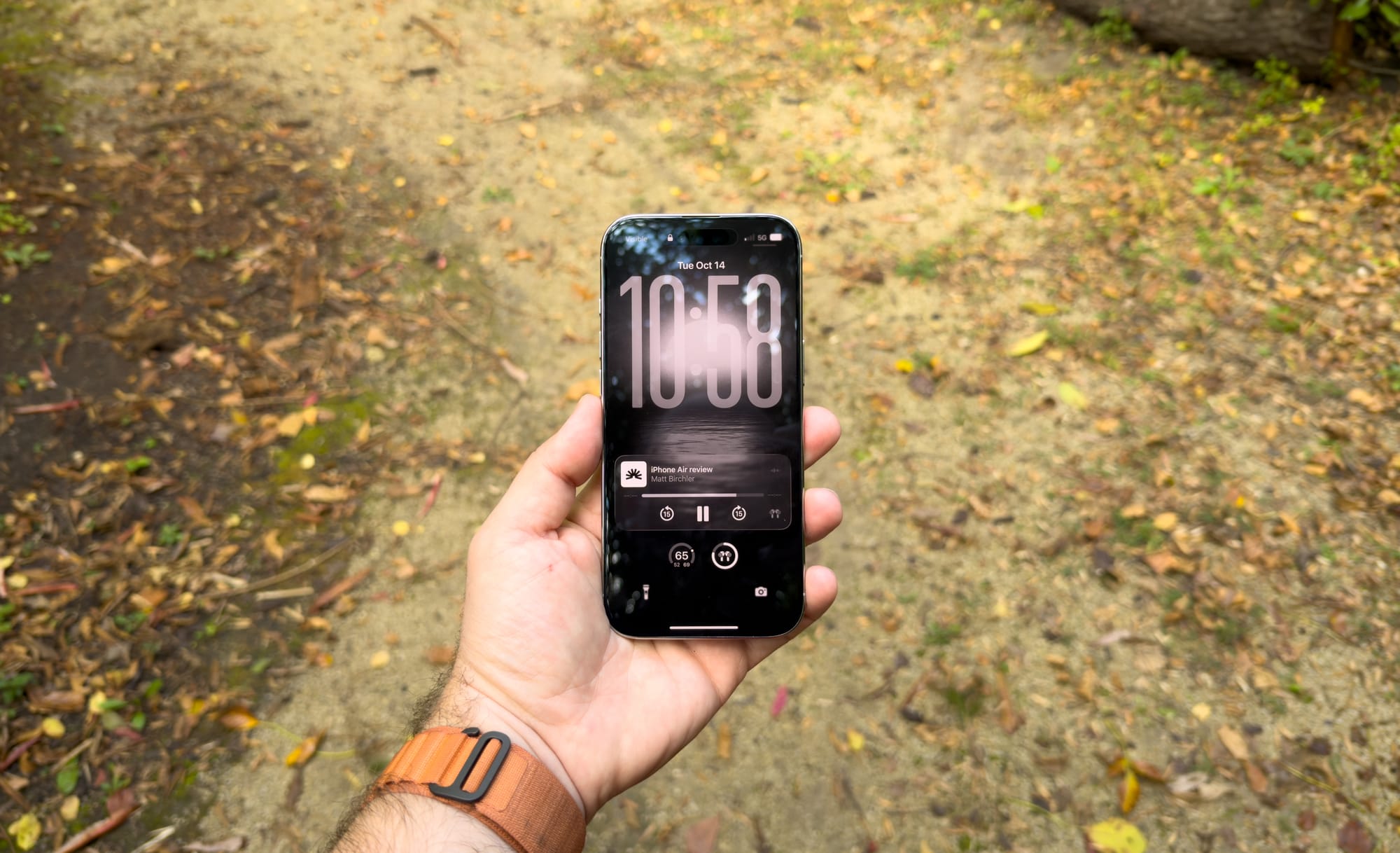
There's nothing to say about this display that I haven't already said in my iPhone 17 Pro review. And that's a wonderful thing because for the first time in a very long time, there are no sacrifices when going between any of the iPhones in this lineup. You get the same pixel density, same brightness, same refresh rate. Everything is exactly the same, and that's awesome. Whether you're buying the baseline iPhone 17, the iPhone Air, or the iPhone 17 Pro or Pro Max, you're getting the best display Apple can deliver in 2025, and I think that's awesome. For the iPhone Air specifically, that means having a phone that feels impossibly thin with a no-compromises display that doesn't make you feel like you're sacrificing anything in this regard to get a thin and light phone.
The Speakers
While the displays have no compromises, the speakers absolutely do. For many years, most flagship phones have had two speakers in them, one at the top and one at the bottom. Those can be used together to deliver more volume, higher fidelity, and when turned sideways, stereo output. However, the iPhone Air only has one speaker, which is up in the earpiece at the top of the phone. This isn't a huge issue when I'm using my phone in hand vertically, but as soon as I turn my phone sideways, it does get distractingly bad as the audio is always coming from one side of the screen and not the other. It is a genuinely unpleasant experience for me.
Additionally, the volume is an issue, as it simply does not get as loud or have the same quality at higher volume levels as other iPhones that I've had in previous years. If you're coming from a much older phone or a budget Android phone, maybe you won't notice a big difference, but iPhone speakers have gotten very good in recent years, and as someone who does relatively frequently listen to their phone from the in-device speakers at home (never in public), the reduced volume and fidelity is absolutely something I've noticed. Genuinely, I was making my wife's lunch today as I do every morning, and I was listening to a podcast as I often do. I uttered out loud, "god, this sounds like shit," because it was a show I listen to in that situation every week, I know what it sounds like from other phones, and this was genuinely terrible. It's easier to tolerate at low volumes, but past 50% and it's just atrocious to my ears. And why wouldn't it sound bad? The bottom speaker is usually higher quality and can get louder than the top speaker in most phones, so it's not a big surprise that when only the smaller, quieter, worse speaker remains, the perceived overall quality plummets.
All this combined with the odd landscape video experience with sound coming from just one side, it really makes the speakers the unexpected worst thing about this phone for me personally.
Battery Life
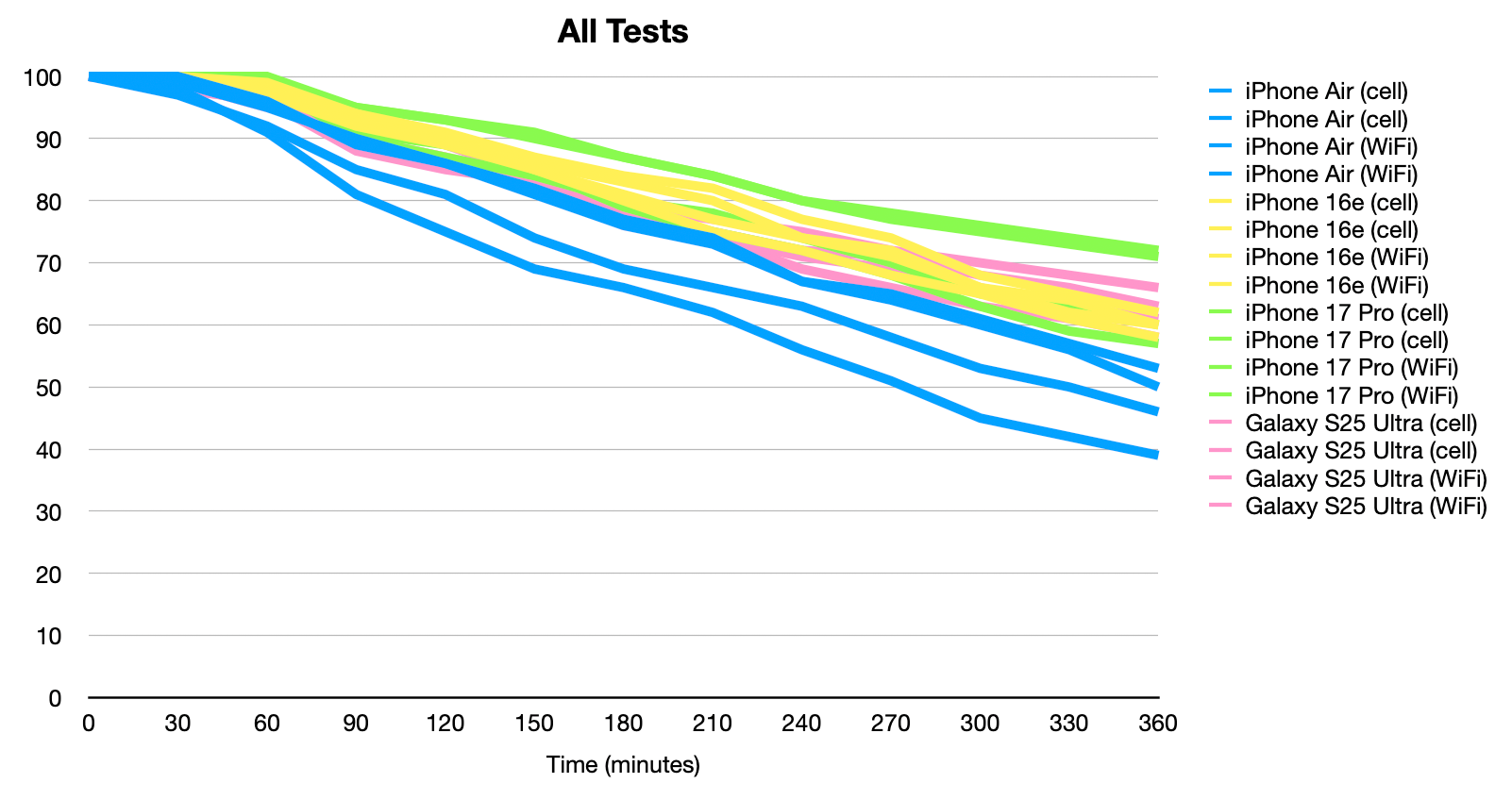
A small phone means small battery life, right? Well, yes.
As I have experienced in both my somewhat scientific tests, which showed the iPhone Air performing worse than other flagship phones that I've used recently, as well as in general real-world usage, the iPhone Air simply doesn't have enough physical battery capacity to last as long as I'd like my phone to last.
To be clear, it's not an absolute disaster, but it is a marked step down from what you're likely used to getting on a $1,000 phone.
I was on a trip recently, and my iPhone 17 Pro really impressed me with how well it was able to hold on to battery life throughout a day away from a charger and away from a reliable Wi-Fi source. Meanwhile, the iPhone Air just consistently trickles down battery in a way that I personally am not used to coming from the Pro lineup of phones. If you're coming from a phone that doesn't have as good battery life, or god forbid an iPhone mini, then maybe you'll be totally fine with this. And if your needs are less intense than mine, or if you're okay just always having to consider whether you need to charge, then you might be okay with this. But for me, it was definitely an annoyance that I didn't enjoy.
Camera
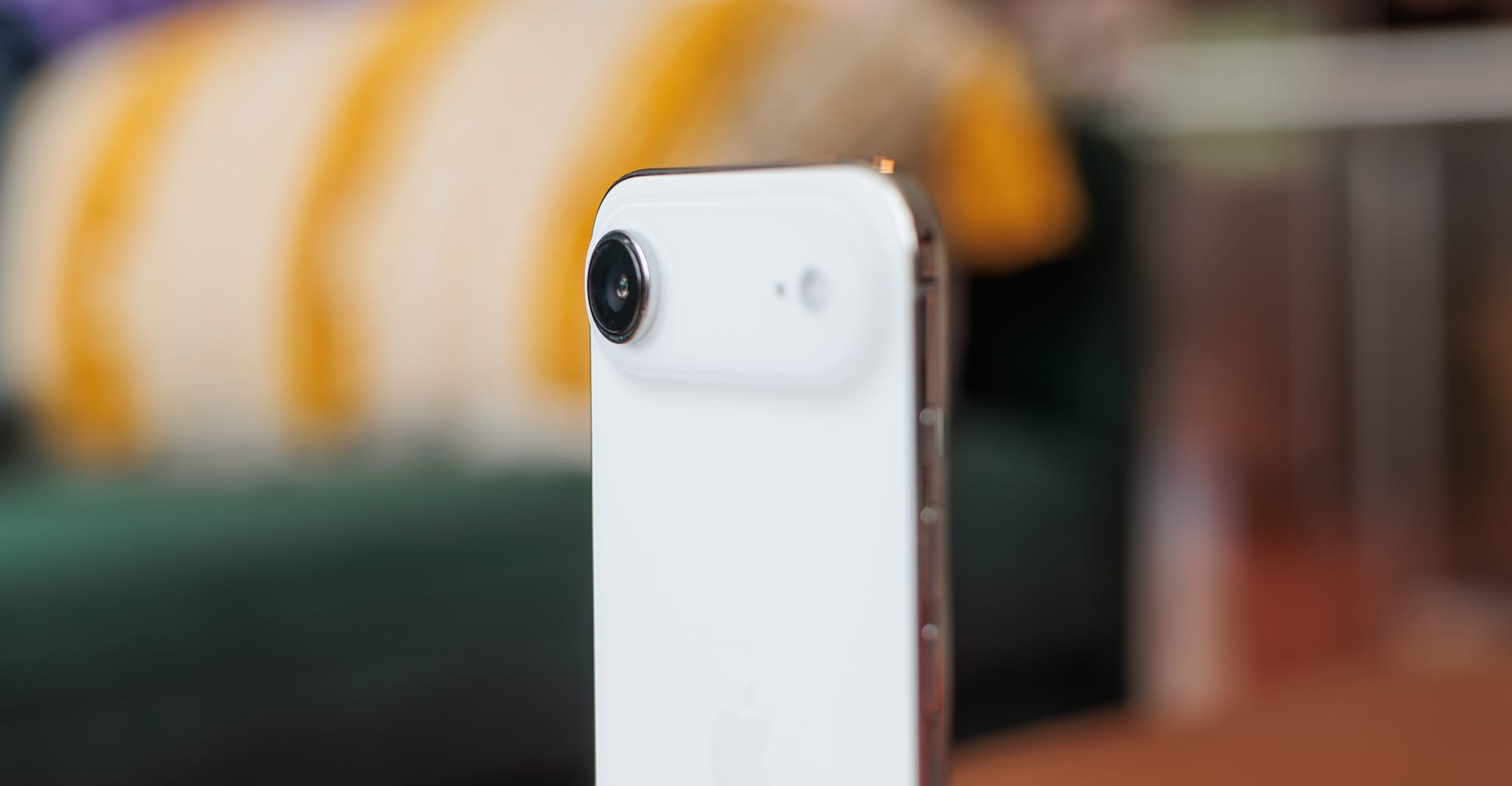
The camera is also a bit of a bummer for someone like me. You get one 48-megapixel camera on the back of the phone and the same selfie shooter that you get on all phones in the iPhone 17 lineup.
The selfie shooter I have no complaints with. I think it's awesome. I really enjoy the ability to shoot portrait and landscape without twisting the phone, and I think the quality is quite high.
However, the single lens on the back of the iPhone Air is a tough pill to swallow for someone like me, but that may not be the case for everybody. Losing the ultrawide is annoying. I don't take a ton of macro photos, but I do use the camera relatively frequently to scan things or take photos of barcodes and uninteresting things in my life that I just need to document. Having a macro lens that allows me to get an in-focus photo from effectively any distance I want is really valuable. Losing that on the iPhone Air is not a death sentence, but it is an annoyance. Similarly, I don't always need a telephoto lens, but I do like having it when it's useful, and not having that as an option at all on the iPhone Air is tough for me.
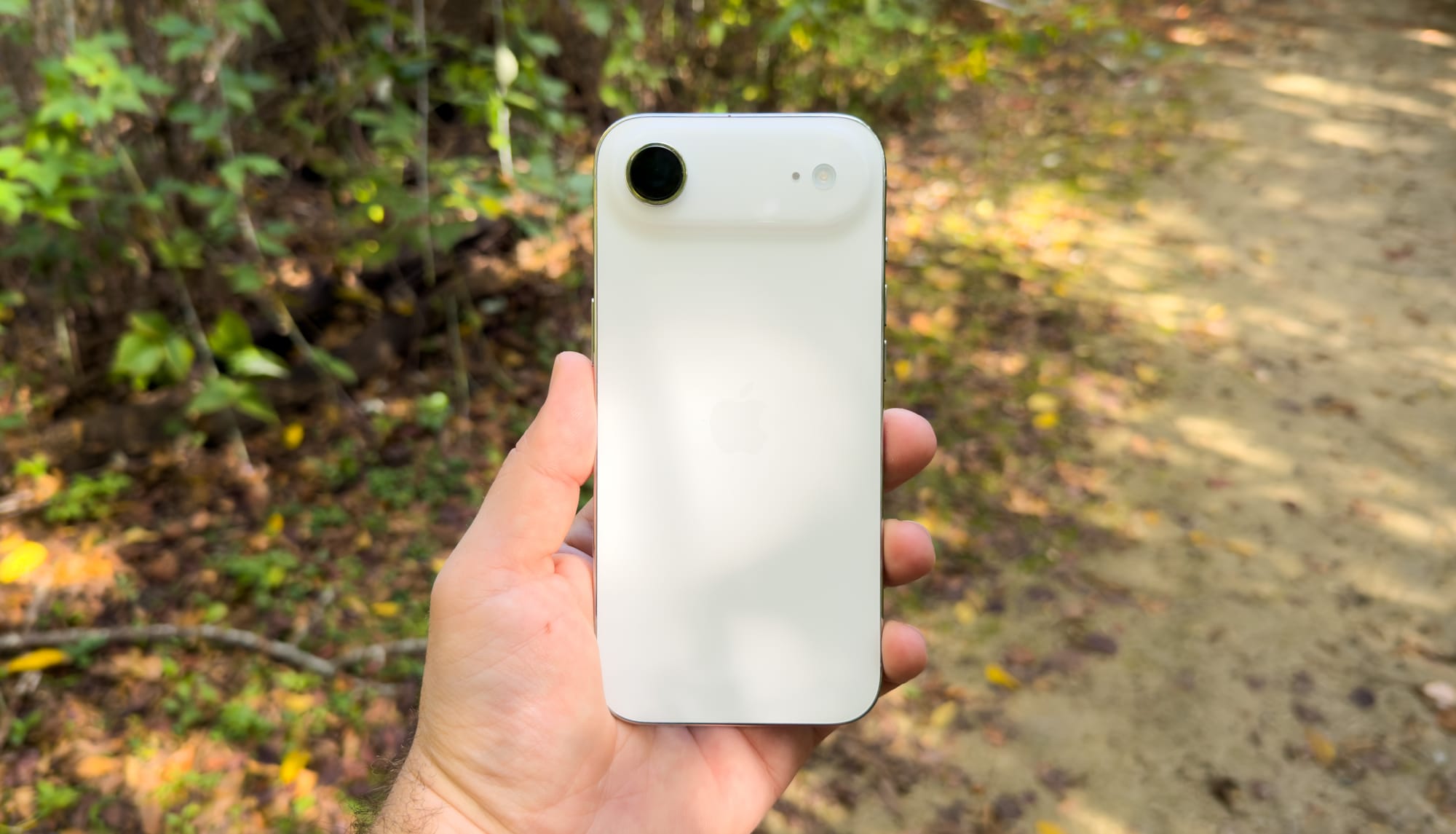
Additionally, there are none of the Pro photography or video modes that you get on the Pro phones, so there's no ability to shoot RAW photos from the camera app, nor do you have the ability to shoot ProRes video either. You can use third party camera apps to get RAW photos, but from what I can tell, they only get to take 12MP images.
I think the iPhone can take really great shots without having to use these advanced modes. However, I do like using them in some situations—for example, when I was recently on a trip to Toronto—and not having them at all is definitely a frustration that I would find hard to tolerate using this phone full time. Obviously, that is not the situation for everyone, and there are certainly people who would be just as well served by this single camera setup as they would be served by the three-camera array that you get on the Pro phones because their needs just aren't that significant and they don't really need more than that. That's fine and that's great for them, and it helps them save money if they'd like. But for me, I do like having those features, and it is a frustration with the iPhone Air that I don't have them.
All that said, the camera that is here does take nice photographs that are on par with what you would expect from the last couple years of iPhone cameras. You just lack the Pro features and flexibility of the additional lenses.
The Little Stuff
One thing worth mentioning is heat dissipation, which differs noticeably from previous iPhones. Traditionally, the system on a chip (SoC) sat in the center of the motherboard, so heat concentrated in the middle where you'd feel it during normal use.
Due to this device's extreme thinness, Apple moved the SoC near the top of the phone, while the bottom three quarters is mostly battery. This means even when the A19 Pro processor runs at full power, I rarely feel warmth in my hands since they're positioned far from the chip.
However, if your fingers move toward the top of the device, you'll notice significant warmth—more than I've felt with previous iPhones during normal use. The chip is surely throttling before reaching dangerous temperatures, but you'll definitely feel it during intense tasks if you touch that area.
This likely won't be an issue when holding the phone normally in portrait mode for scrolling or using apps. But you might notice it when holding the phone in landscape orientation.
Final Thoughts
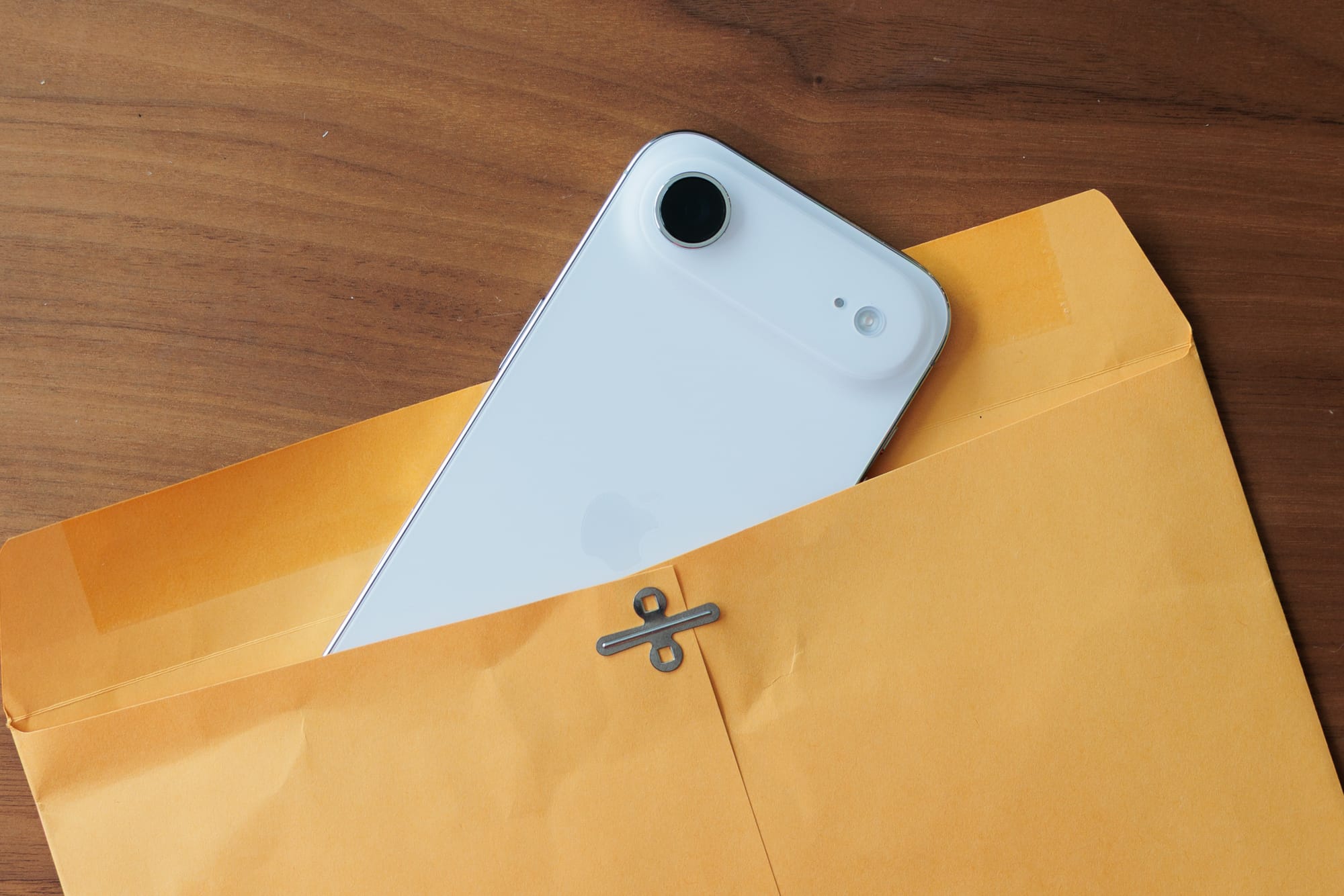
So what's my go-forward plan? Do I stick with the iPhone 17 Pro or do I use the iPhone Air instead? Well, I guess I'm blessed to be able to have as much information as I do to make this choice in the first place, but to me, the iPhone 17 Pro is still the phone for me.
I really do enjoy the thinness and lightness of the iPhone Air. If I use it for several days in a row without touching my iPhone 17 Pro, I have a moment of shock when I pick up the 17 Pro again because it does feel a bit more like a brick by comparison.
As far as battery life goes, I could make this work if I needed to. It's not as good as I'd like, but I could charge throughout the day rather than letting my phone just sit loose on my desk. If I needed to make sure I always had a battery pack with me when traveling, I could do that as well. I certainly wouldn't like those things, but if I liked using the phone moment to moment enough, I could make it work.
The two things that really stand out as issues for me long term are the camera gaps as well as the speakers. For cameras, yes, I would usually be fine with the one lens, but when those moments come up (and you don't always know when those moments are going to happen) I would like to have as much flexibility as possible, and that means having more lenses and more shooting modes available to me.
And then even more impactful day-to-day, those speakers are really rough, especially when watching video in landscape, which apparently I do a reasonable bit of because I find it really disorienting to have the sound coming out of only one side of the device.
All that said, I will start using the iPhone 17 Pro again as my main phone, although I really do like the Air and appreciate what it's doing, and I could understand why someone who has slightly different priorities than me would choose it instead. That said, obviously the iPhone Air is a bit of a future-looking device that represents where Apple would like to go with its phones. Yes, part of this is a folding iPhone that uses two halves even thinner than this, but I'm sure it also means miniaturizing the current top-of-the-line technology to fit in a smaller form factor.
To hell with battery life. If Apple could get a phone with this form factor, all the cameras, and all the speakers that I want, then this would obviously be the phone that I would choose personally. The tradeoffs aren't quite there for me today, but I can definitely see how they get there in the next couple years.
